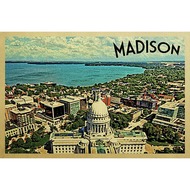Observe Think Wonder Handout
(View Complete Item Description)The "Observe, Think, Wonder" sheet was written (along with other resources) from a grant from the Library of Congress. It is based off their 6-12 analysis of primary sources documents. This is geared more towards elementary primary source analysis. A K-5 student can analyze appropriate primary sources such as photographs and maps. Using the "Observe, Think, Wonder", students can walk through age-appropriate analysis by taking some time to look closely at the source (observe) and write down what they see; then dig a little deeper into what they think is happening in the photo or reading (think) before finally writing down any questions they might have about the source (wonder). This is great practice for further analysis and evaluation as they get older.
Material Type: Activity/Lab









